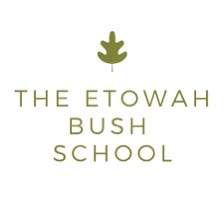An Education by Etowah Bush School

February 6, 2020
Downtown Cartersville is truly spectacular. With historic charm, lively restaurants, and metal railroad ties splitting its center, it is precious to its citizens.
Nestled by the tracks sits Cartersville’s Visitor’s Center, converted from an old train depot. Inside that center, Mrs Alexis Carter-Callahan and her husband have created a museum for the black history of Cartersville—the Etowah Bush School.
The Etowah Bush School was founded because the Carter-Callahan’s saw a lack of education about the black history of Cartersville. Cartersville and Bartow County have such a rich African American history, filled with an equal share of good and bad. The couple decided that they wanted to begin a museum and tour guide service to let people know just how incredible African Americans have been and will continue to be in the Cartersville/Bartow County area.
Carter-Callahan gives a forty-five-minute walking tour from the museum in the train depot around the downtown area. Along the way, she explains the impressive past of Cartersville’s black community in the downtown area, highlighting numerous important people and places from black history. Many are famous names one would never have thought had Cartersville connections.
Michelle Obama’s great-great-grandmother was buried in an unmarked grave in Bartow County, and famous writer Toni Morrison’s father and mother lived and operated a business near City Hall.
The tour also provides a glimpse into the day-to-day business conducted in downtown Cartersville, including where African Americans could get haircuts, go to the doctor, and grab lunch without the demeaning eye of segregationists.
But there is never light without dark. The tour also exposed some of the more traumatic sides of Cartersville’s history, including the location of three lynchings that took place in Cartersville between 1904 and 1930. The third and final lynching shook the successful black business owners in Cartersville to the core, causing many of them (including Morrison’s family) to relocate to other places in fear of the hostile environment.
Though many fled, many stayed and resisted the hate with heads held high. Carter-Callahan shares the backstory of the honorable Chief Justice Robert Benham and his contributions to Cartersville and the state of Georgia as a whole. Through his intelligence, perseverance, and respect, Justice Benham was the first-ever African American judge appointed to the Georgia Supreme Court. He was born and raised in Cartersville, and his achievements should be admired by all.
In addition to this, on possibly the most visual part of the tour, guests are able to visit Vinnie’s cabin, where a mother named Vinnie lived with her son during the late 1800s. The old slave cabin stands on what used to be the town home of plantation owners from Pumpkin Vine Creek. Little has changed since Vinnie lived there …it is smaller than the bathrooms at CHS, made out of dusty wood and newspaper used as insulation.
To many who visit this cabin, the sadness and severity of conditions of the slavery practiced and promoted by Cartersville not that many generations ago leaves their hearts clenched and aching. Carter Callahan remarked, “You can almost feel the charge in the air where Ms. Vinnie’s bed was—it’s like she’s still there, watching, listening.”
Beyond the walking tour sites, a driving portion of the tour is available for those who wish to explore more of the historic black sites in the area. Additional sites include George Washington Carver Park and the Black Pioneers Cemetery, both of which were critical to the black community during the time of segregation.
Through the hard work and research of Mr. and Mrs. Carter-Callahan, citizens of Cartersville and beyond are able to learn more about the town they love. No matter who you are or where you are from, there is more in Cartersville to explore than you can possibly imagine. And it is all right at your fingertips through the Etowah Bush School.


